Construction projects are notorious for delays, but contractors create project schedules to keep them on track.
They do this during the planning process, so there are minimal risks and surprises once the execution phase begins.
Yet, no construction schedule is the same. There are several components to keep in mind, as well as different types to use for specific projects.
But generally, each contractor or project manager needs to take similar steps to create an effective construction schedule.
If you want to learn more about construction schedules, let’s start with some basic definitions.
In this article...
What Is a Construction Schedule?
A construction schedule is a detailed plan for every task, activity, and milestone for a construction project. It outlines how a project will be completed and its duration.
Most commonly, it is a graphical representation of the activities that the project entails and an estimate of how long the construction will take.

To create an effective construction schedule, companies often hire a construction scheduler.
They are members of the project management team, and their primary duties involve creating and updating the project schedule.
According to Dr. Kenneth Sands, a construction management professional, construction schedulers provide a baseline for project planning and determine when things need to be done.
They have to be detail-oriented and have the industry know-how on building construction projects.
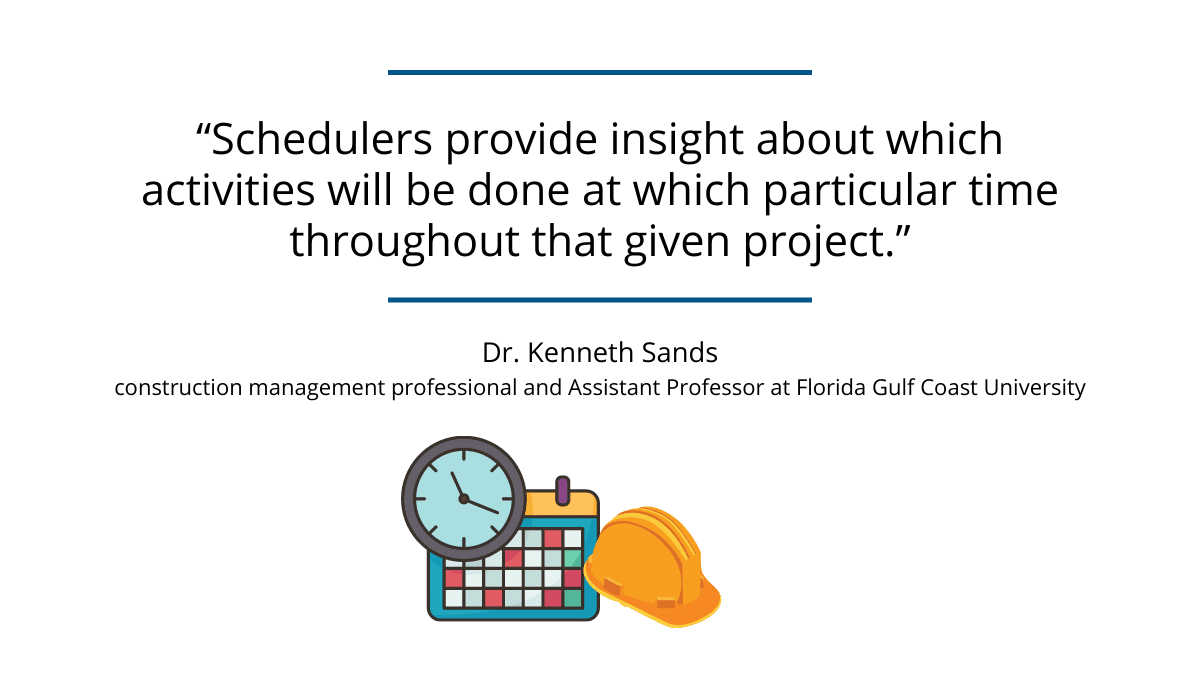
All in all, construction schedules are a fundamental part of project management because they track progress and keep the entire project on time and within budget.
Why Are Schedules Important for Construction Projects?
Construction projects are becoming more and more complex with tighter margins and budgets, so a construction schedule helps contractors better manage construction jobs.
Namely, you’ll have better control over your limited resources (labor, equipment, materials, etc.) to allocate them more efficiently.
The construction schedule also affects quality, where you’ll ensure the right materials are used throughout the project lifecycle.
Most importantly, a construction schedule is a set of instructions employees can refer to and follow to finish their tasks.
It keeps every stakeholder informed and allows for more transparent communication about what needs to be done. Team collaboration is seamless and results in minimum downtime.
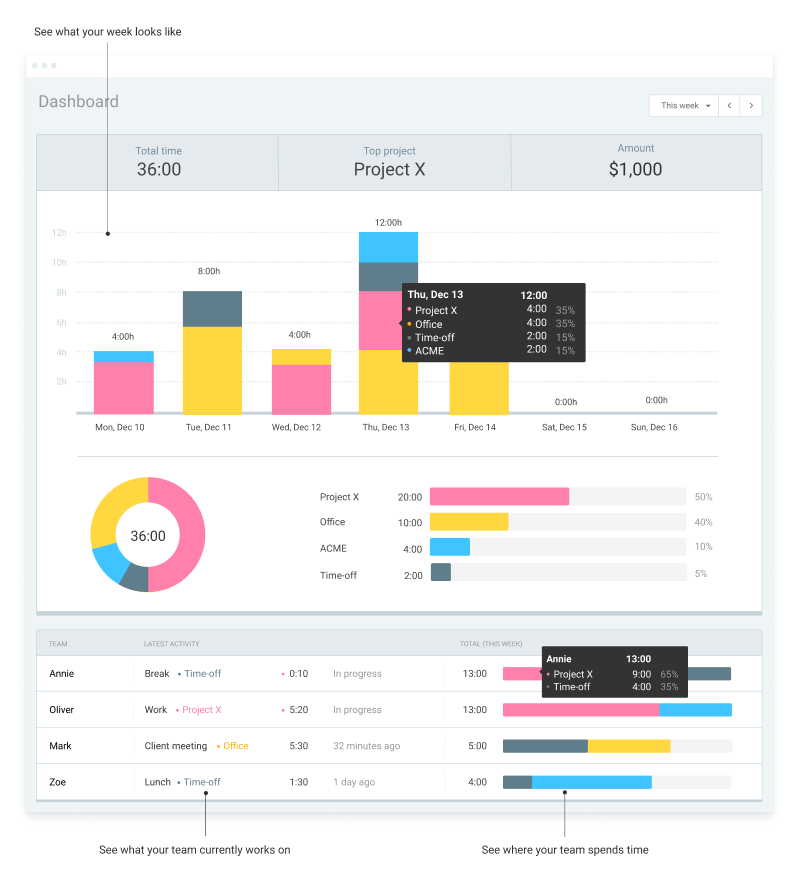
Eco-Energy experienced these benefits once they started using project management software with a robust scheduling feature.
This helped them set a time frame for their projects and prioritize tasks.
According to the company, it was easier to see “who’s working on what, when, and where” with a comprehensive schedule.
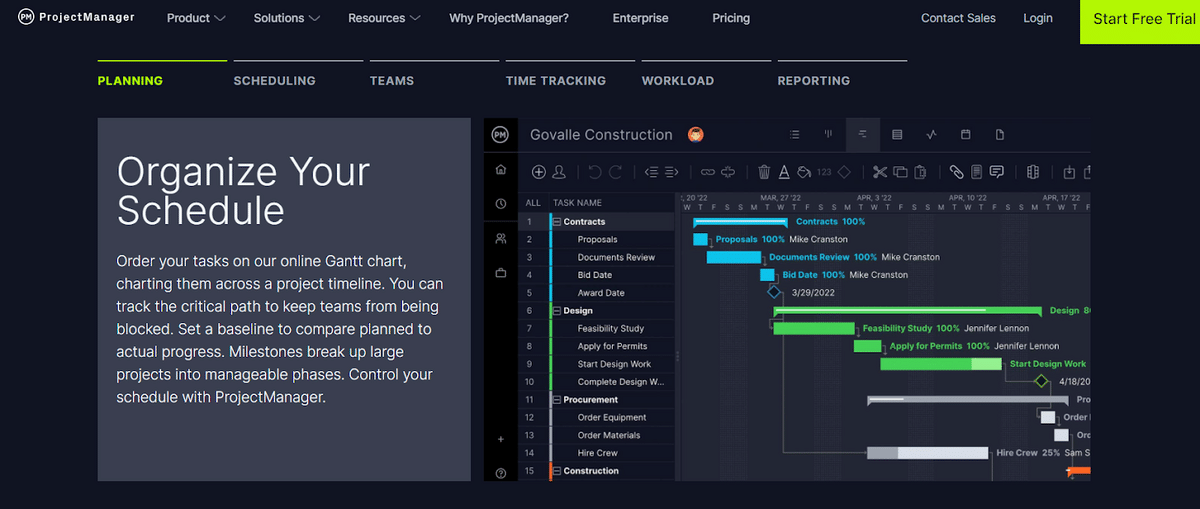
Basically, a construction schedule creates a game plan to identify all the elements of the work, but also responsibilities and activities for each team member.
So, once you have an accurate schedule, it’s easier to track performance and progress. If there are any delays, you can quickly identify and resolve them based on the construction schedule.
In the end, a construction schedule ensures greater project stability where you’ll minimize surprises that can jeopardize the project’s progress and outcome.
Because you have planned for everything, you’ll have better control over project details and last-minute changes.
Components of a Basic Construction Schedule
Each project schedule includes some basic components. Here is what you need to keep in mind when you’re creating one:
Project deliverables | Listing project deliverables will help you determine the overall project scope. Identify the necessary documents, software, and other items to create a successful construction project schedule. |
Resource calculation and allocation | Determine how much labor, materials, and equipment you need to complete a project. Purchase the required materials and arrange transportation for all your resources. It’s also important to identify the most efficient use of labor and materials, in order to minimize waiting times. |
Tasks needed | For a better project overview and control, it’s necessary to break down the entire project into smaller tasks. Any dependencies should be outlined so the team can see the following steps. |
Deadlines | To help you track progress and task completion, it’s sensible to add milestones to the overall project deadline. Each task will have an estimated timeline, enabling you to determine the overall project completion date. |
Budget | Time and money go hand in hand, so as you track task completion, you can also manage how you’re spending the budget at each stage of construction. That way, you can see if you’re overspending in certain areas and make better financial decisions. |
Essentially, a construction schedule is a project management tool that helps construction companies coordinate and utilize all their resources in the most efficient and timely manner.
But to do that, they need to create a schedule with these basic components in mind.
Common Types of Construction Schedules
Each project has different requirements and types of work, so several scheduling methods can be used in construction.
Depending on your needs, you can find a scheduling method that fits your project requirements.
So, let’s look over the most popular scheduling methods.
Critical Path Method (CPM) Scheduling
The critical path method (CPM) is a visual planning tool using a network diagram representing the required activities to complete a project.
The network diagram logically connects tasks and estimates their duration. That way, you can identify critical activities but also other non-critical ones.
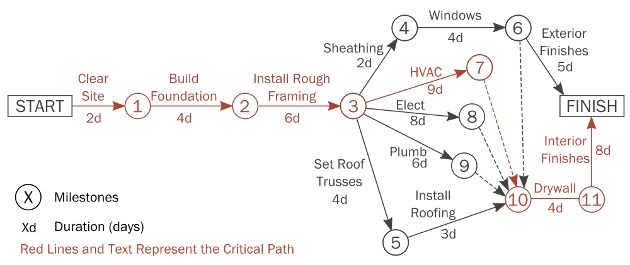
This method is valuable if you want to create the most logical sequence of steps to complete a project.
You’ll identify essential tasks for project completion and differentiate them from the supportive ones, which are more flexible and don’t have a huge impact on the project.
But if you also want to account for smaller interdependent tasks and resources, you might want to try a different scheduling method.
Quantitative Scheduling
Quantitative scheduling (also known as Q scheduling) is a scheduling method that uses bar charts to indicate quantities of resources, locations, and times they’ll be needed.
Additionally, you can track expenses associated with each required task for the project.
The best part about this method is that it also allows workers to follow tasks in a sequence without disrupting others.
There should be no interference with activities at the same location with Q scheduling.

This method is useful for repetitive and unique tasks in construction projects.
Plus, it is the only scheduling approach where you can identify relationships between the job sequence and incurred costs.
Yet, this is still a relatively new method, so not many people in the industry are familiar with it.
Another disadvantage is that it takes a lot of initial effort and coordination to establish a reliable construction schedule.
Gantt Charts
A Gantt chart is one of the most popular scheduling methods in construction. It’s a very simple visual depiction of a construction project.
But the best part is that it’s easy to use and understand. It consists of stacked bar charts representing different activities, duration, overlaps, and assigned people.
Each Gantt chart has the following elements:
- Labels
- Bars
- Milestones
- Dependencies
For most construction companies, it’s an ideal solution, creating a schedule that will track overlapping activities, monitor tasks, and avoid delays.
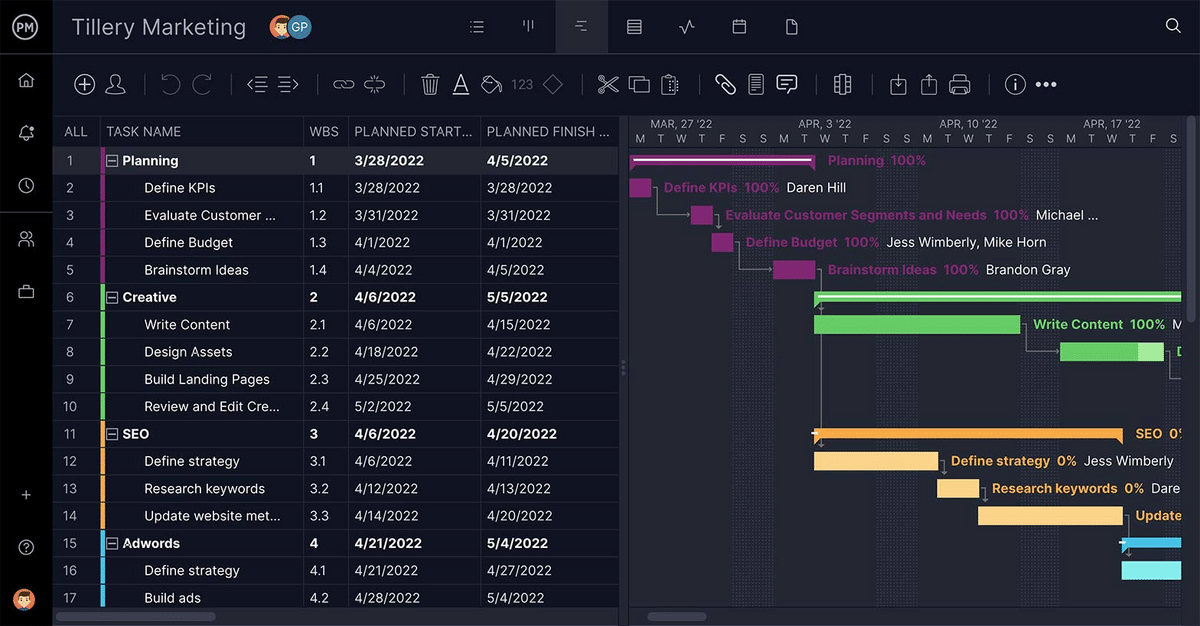
But one big disadvantage is that it only tracks time, not the required resources and costs. It’s also difficult to use in large projects with many different tasks being completed simultaneously.
Nonetheless, if you need to plan the order of execution, monitor overall progress, and assess how long a project will take, then Gantt charts are one of the best scheduling methods to use.
Line of Balance
A Line of Balance (LOB) is a scheduling technique used for repetitive tasks.
Unlike other scheduling methods, it uses a diagram to represent individual activities, their duration, and the rate at which they need to be finished to stay on schedule.
The project’s timeline is represented on the x-axis of the LOB diagram, while tasks are represented on the y-axis.
In construction, its use is ideal for repetitive work such as roads, pipelines, railways, and tunnels, among other things.

The main advantage of this method is that you can optimize resources and manage the workforce more effectively for similar construction work.
Additionally, it’s easy to modify and update while allowing you to see problem areas in advance.
Following that, this method is only useful for work with many phases with similar activities.
You can’t get a great overview of your entire project since the method only focuses on individual activities.
Follow These Steps to Create a Robust Construction Schedule
In order to create an effective and robust construction schedule, there are several steps you need to follow. Let’s get over them.
#1. Get Informed About Project Requirements
Understanding the project’s scope is essential to creating a functional construction schedule. You need to gather as much information as possible about what the project will require of you.
In this step, you’ll have to determine the roles and responsibilities of your team, identify the main resources (labor, equipment, materials), and list all subcontractors involved.
Specify what needs to be done and estimate the project’s duration.
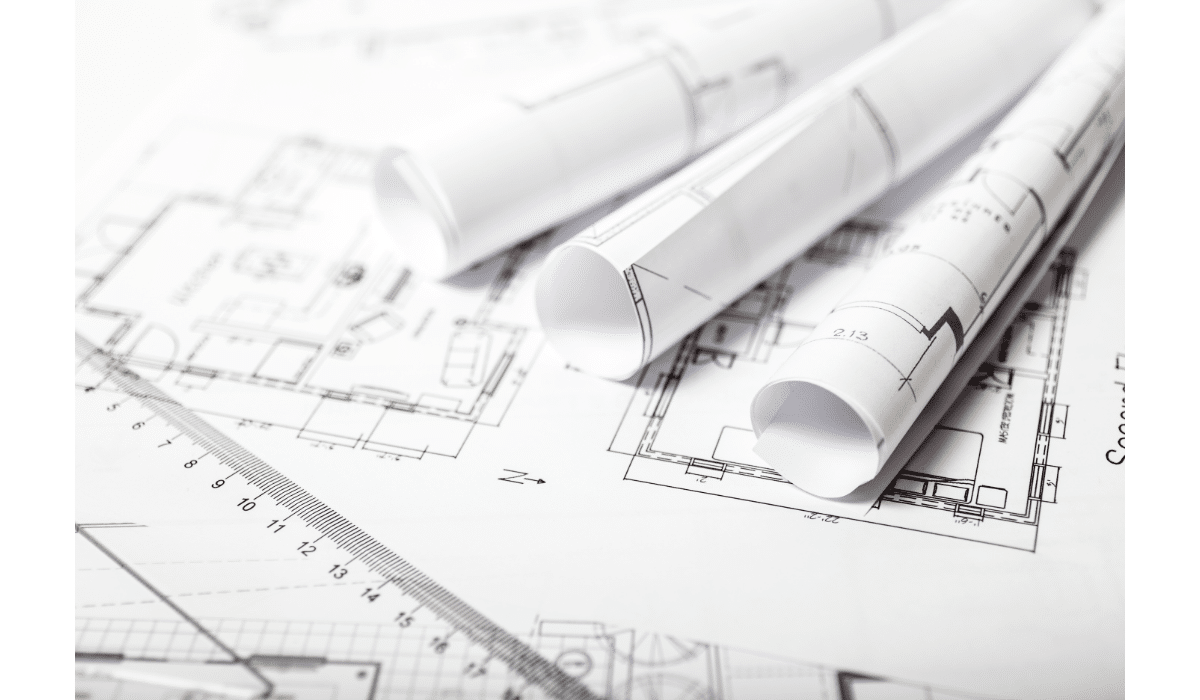
Don’t forget about local building codes you’ll also need to comply with during construction.
This also needs to be considered when creating a schedule because it affects the tasks and the order in which they are done.
Also, a budget is crucial when you’re creating a schedule.
Many activities will depend on the available funds, so you need to carefully calculate expenditures and their effect on the project’s timely completion.
This is especially important for time-sensitive expenses such as material procurement.
Thorough project research will help you gather enough information to put together a good construction schedule.
#2. Collect and Prioritize Tasks
Once you have the context for the project, it’s important to break it down into smaller tasks. Project managers often use Work Breakdown Structure (WBS) to collect and prioritize tasks.
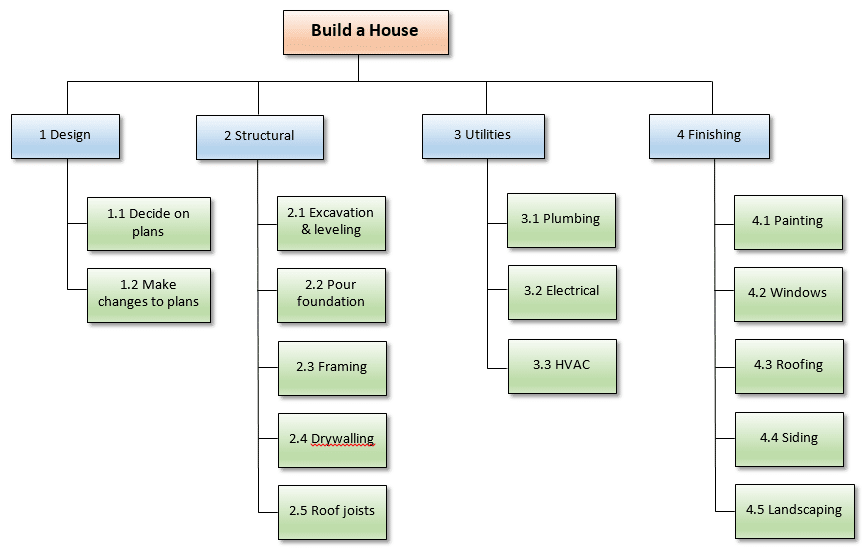
The WBS lists down all project tasks while looking into dependencies and project scope. It can help visualize deliverables and get to the most basic parts of the project.
Additionally, it makes the overall work more manageable and keeps every stakeholder accountable.
Think about the individual tasks as stepping stones to successful project completion.
In this sense, the construction schedule is more accurate the smaller you go, as it’s more manageable to assign tasks correctly and monitor their completion.
#3. Estimate Task Duration
Once you compile a list of tasks, it needs a start and an end date. This will give you a clear picture of how long individual activities will take to complete and the project’s overall duration.
But though this might seem easy, it’s not. You need to consider numerous factors when making time estimates for construction tasks.
Namely, bad weather, scheduled vacation days, holidays, and sick days, among other things.

These factors can have a huge impact on the project timeline, so you have to accommodate fluctuations and allow extra time in the schedule for unexpected events.
Remember that only accurate and realistic construction schedules will help you achieve the project goals.
#4. Assign Tasks
We’ve determined the roles and responsibilities of every stakeholder in the beginning. So now, it’s time to assign them relevant tasks.
The most important part is that everyone knows their scope of work and obligations to the entire project.
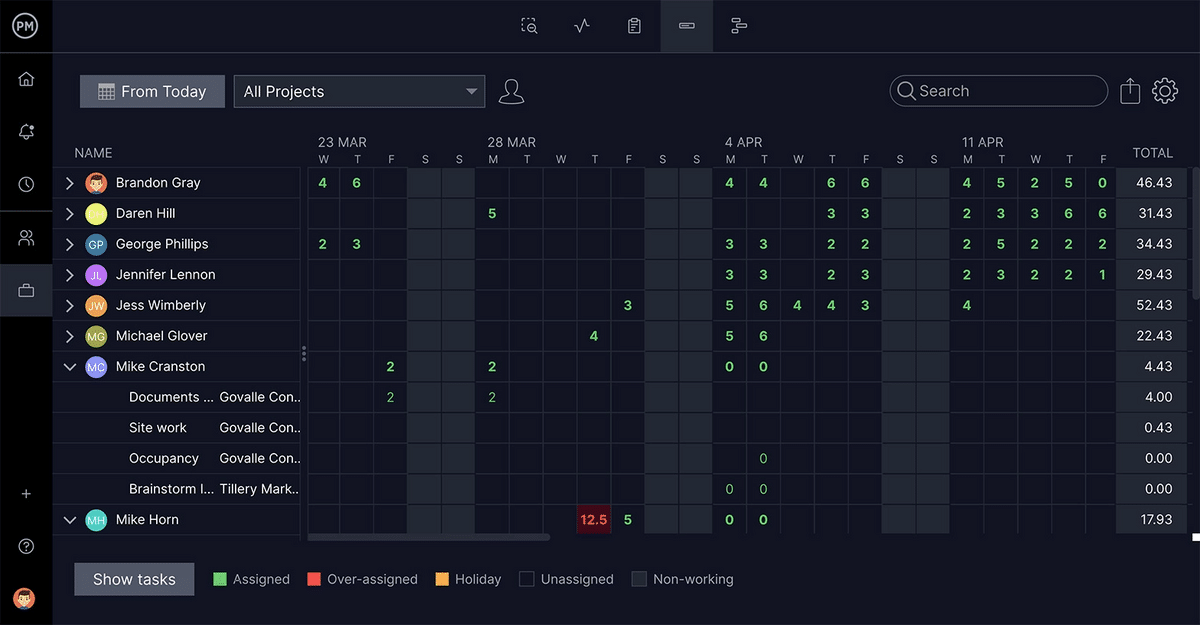
If employees know what’s expected of them, along with knowing needed resources and instructions, they’ll be more accountable for their work.
This needs to happen before the actual construction begins. That way, you can balance the allocated work and make adjustments as the project progresses.
It also means you can carefully monitor employees’ performance and ensure no one is overworked.
#5. Review the Schedule
It’s common knowledge that delays frequently happen in construction. So it’s not recommended to hold onto the same schedule we’ve created at the beginning of the project planning.
Basically, working off a non-updated construction schedule will cause more risk because it won’t reflect the current reality in the field.
Schedules should allow change and reflect new information.
The best way to keep an accurate schedule is to periodically review the entries and note fluctuations compared to your original estimates.
Hopefully, you’ll get to do that daily. But the more regularly you update your schedule, the more successful you’ll be at keeping your project on track.

Consult with other stakeholders to check if your estimates are realistic and make any necessary adjustments.
Schedules are not perfect, so it’s important to get other people’s input to finish construction projects successfully.
Conclusion
Construction schedules are extremely valuable to keep projects on track and complete them successfully.
Taking time to create an in-depth schedule is critical to meeting project goals and keeping your entire team accountable.
Hopefully, this short guide convinced you to take the necessary steps to create robust construction schedules.
That way, you’re setting yourself for success and finishing more projects on time and within budget.









